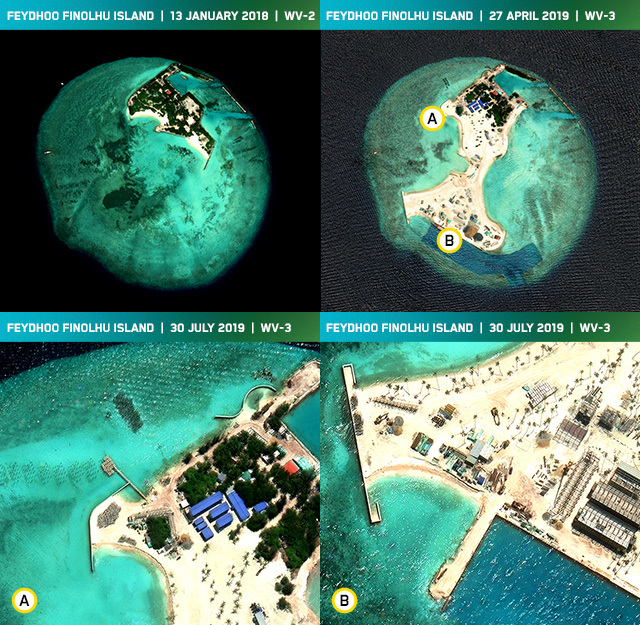China has spent or pledged more than half a trillion dollars to date as part of its massive Belt and Road Initiative (BRI) global infrastructure campaign. As a result, widespread debt is forcing nations to transition control of major assets like roads and air and seaports to Chinese authorities—leading many observers to conclude that increased political power is Beijing’s ultimate BRI goal.
Chinese initiatives in Sri Lanka, the Maldives, Pakistan and other South Asian nations have caught the wary eye of India, the region’s longstanding economic and political powerhouse. China has also made aggressive moves into disputed territories like Kashmir, Hotan, and Ngari—further complicating a Sino-Indian relationship that could very well advance from strategic rivalry to outright hostility.
This month’s edition of Maxar Spotlight will examine the regional developments that have started to reshape the balance of power in South Asia—including China’s investments and growing representation in the region, as well as its military posturing in critical areas along India’s borders. By using powerful proprietary tools like Persistent Change Monitoring, Imagery Analysis Reports and Advanced Open Source Analytics, Maxar provides the valuable context and timely analysis that our government and private sector partners need to react to military developments and order of battle changes in this increasingly volatile region.
See the complete picture on the ground and from space in this month’s Maxar Spotlight.
One Maxar.
Unlocking the promise of space to confront challenges on Earth—and beyond.
Fill out the form to access the latest edition and subscribe to the Spotlight:
Sneak Peek: (excerpt from Maxar Spotlight Vol. 16)
China’s “String of Pearls” and maritime assets in the Indian Ocean
The significant cost associated with BRI projects raises concern that participating countries with poor fiscal frameworks and elevated debt vulnerabilities will fall into a “debt trap” that leads to the relinquishing of strategic assets or territory. This view, also referred to as the “String of Pearls” geopolitical theory, regards the BRI in South Asia as a specific threat to India’s national security, trade, and power projection.

In the Maldives, debt to China is estimated to be at least $1.5 billion—which would represent more than 30% of the small country’s GDP. Under the corrupt Abdulla Yameen administration (2013-2018), massive BRI infrastructure loans were taken and contracts subsequently awarded to Chinese companies at inflated prices. In 2016, the Maldives also changed its laws to allow closed bidding on islands for tourism and resort development. The government subsequently leased Feydhoo Finolhu Island (the closest uninhabited island from the Male International Airport) to China for 50 years for $4 million—well below the market value.
Sincece the Feydhoo Finolhu contract, China has dredged around the Island and more than doubled its size. The following imagery time-series shows development on Feydhoo Finolhu since January 2018.